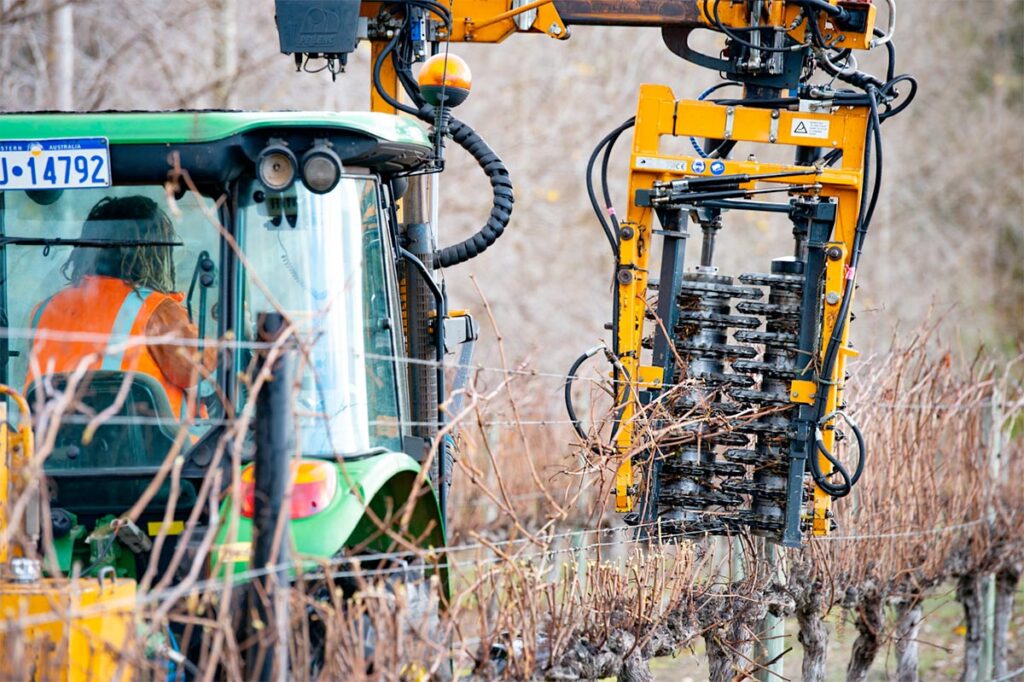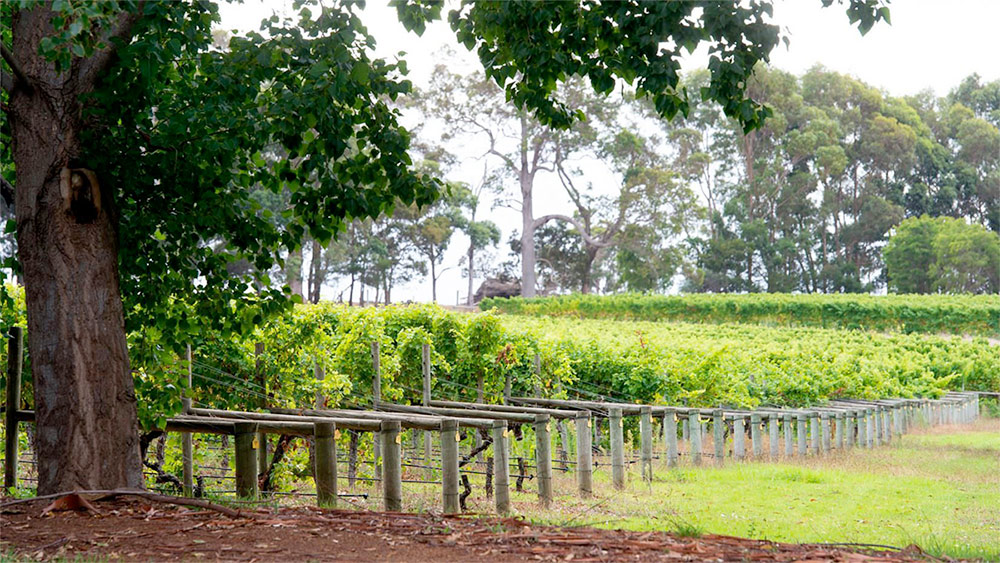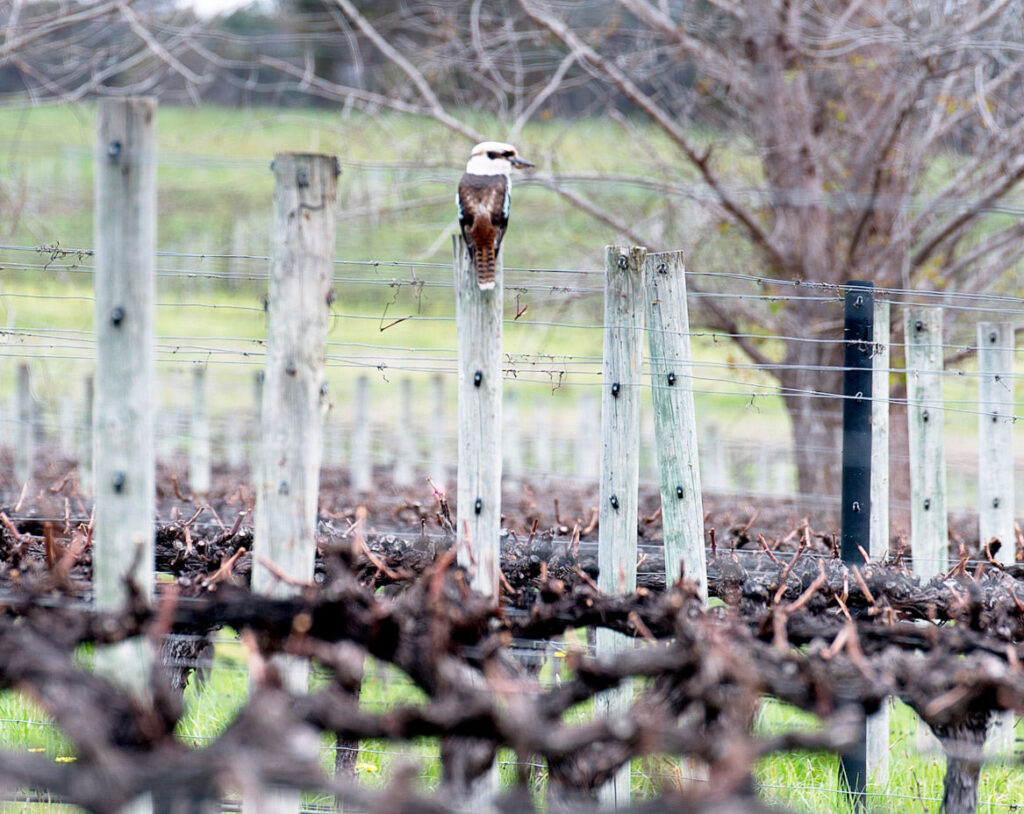Viticulture
MARGARET RIVER GI
Regional Significance
Margaret River sits in the middle of the Naturaliste-Leeuwin Capes Region of south-western Western Australia – a peninsula just under 100 kms in length stretching from Cape Naturaliste in the North to Cape Leeuwin in the South.
It is bordered on 3 sides by oceans: The Indian Ocean (to the North and West) and the Southern Ocean (to the South).

“The Naturaliste-Leeuwin Capes Region is one of the most remarkable and geographically isolated wine regions in the world, bestowed with ancient soils and a unique biodiversity: 80% of its plant species are found nowhere else in the world.“
Margaret River Wine Association
Ideal Grape Growing Conditions
Geography, soils and a perfect Mediterranean maritime climate combine to create ideal grape-growing conditions.
Winter rainfalls, heavier than any other wine growing region in Australia, low risk of frost, cool sea breezes, and our long, dry ripening season which provides even temperature accumulation, all contribute to the vibrancy of our vines and fruit produced.
Cape Landing itself is located just 12.9 km’s from the Indian Ocean.
Temperate Climate
Grapevines tend to favour ‘temperate’ climates, which mostly fall within distinct latitudes of 30˚ and 50˚ from the equator.
Margaret River sits well within this range at 33°55’S.
Average annual heat degree days/sunshine hours, a good indicator of the warmth of a climate during the vine-growing period, puts the Margaret River wine region (at 1,626 hours) comfortably between the Bordeaux region of France (1,472 hours) and the Nappa Valley region of California, United States of America (2,118 hours).
“"Margaret River has the most reliable climate of all the major wine regions - indeed all - of Australia. It's latitude and ever-present maritime influence of the Indian Ocean combine to give it high winter rainfall and a very even accumulation of heat throughout the growing season."
James Halliday, Wine Companion
VITICULTURE AT CAPE LANDING
Wine Plantings and Soils
Cape Landing was first planted in 1998 with Cabernet Sauvignon (2.5ha), Syrah/Shiraz (1.96ha), Chardonnay (3.68ha) and Sauvignon Blanc (4.19ha).
The vineyard is gently sloping, well drained, and its soil profile consists primarily of Treeton Low Slopes with gravelly duplex (Forest Grove) and pale grey mottled Mungite, perfectly suited to making fragrant, textured and pure wines.
Canopy Structure & Management
Vine rows are oriented north-south, and a vertical shoot positioning trellis system is used throughout Cape Landing.
Managing the vine canopy (the portion of a vine above the ground formed by the shoot system – the leaves, petioles, shoot stems, shoot tips, lateral shoots and tendrils, and the fruit, trunk and cordon/canes) and manipulation of the canopy microclimate, is our primary consideration and a key indicator of superior quality wines.

Primary Viticulture Techniques
Winter Hand Pruning – This helps manage future shoot location and density.
As an established practice at Cape Landing, we prune our Cabernet Sauvignon and Shiraz vines up to 6 weeks early, to promote early bud burst, accelerate growth and provoke a longer growing season for our red wine varietals.
Shoot Thinning (De-Suckering) and Positioning – This affects shoot density and shoot location.
Leaf Plucking – This is crucial especially around the fruit cluster zone. Its purpose is removal of shade and greater exposure of the fruit.
Yield Thinning/Reduction – This allows us to maintain consistent yield and fruit quality.
Shoot Thinning/Leaf Plucking
Shoot thinning and leaf plucking increases the space between canes and fruit clusters and reduces shading provided by the canopy.
This allows more sunlight to reach the crown of the vine, fruit clusters, leaves and the buds, improving wine quality and fruit yield.
It also has the practical benefit of enabling afternoon sea breezes to dry clusters, especially after later season rainfall and more humid conditions, reducing the risk of disease.
Manipulation of cluster zone microclimates to reduce humidity and assist the rapid drying of wet fruit clusters is particularly important in the management of botrytis bunch rot.
Canopy Management
Open canopies improve spray coverage but use of canopy management techniques becomes even more important late in the season when withholding periods imposed by the Australian Wine Research Institute restrict late season use of sprays.
Leaf/shade reduction is applied selectively, and as required, to different vine varieties.
Our white grape varieties, Chardonnay and Sauvignon Blanc, generally have varied levels of shade retained throughout the growing season to protect fruit from over exposure to sunlight.
In contrast, our red grape varieties, Shiraz and, in particular, Cabernet Sauvignon, are typically exposed to sunlight throughout the entire growing season.

